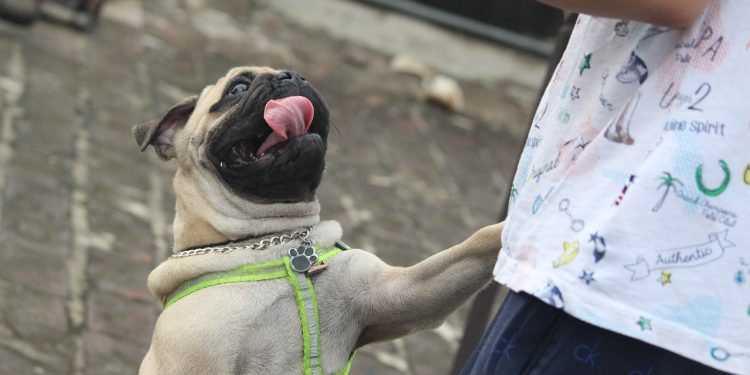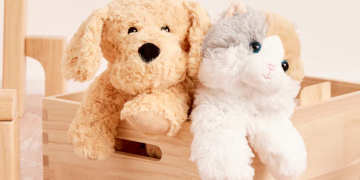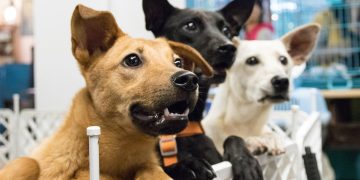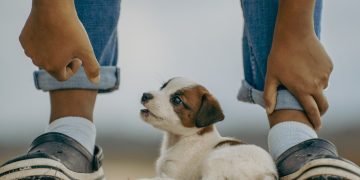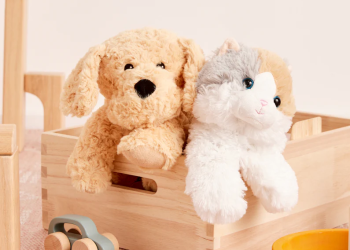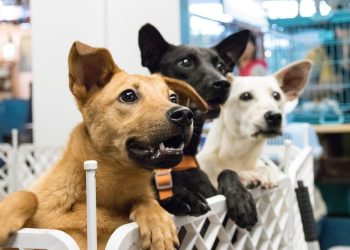Having a dog that enthusiastically greets guests by jumping on them can be both embarrassing and problematic. While your dog may simply be expressing excitement and affection, jumping can make visitors uncomfortable or even lead to accidental injuries. Teaching your dog proper greeting behavior requires patience, consistency, and positive reinforcement. Here’s a step-by-step guide to help you stop your dog from jumping on guests.
Why Dogs Jump on Guests
Understanding the reasons behind your dog’s behavior is the first step in addressing it:
- Excitement: Dogs often jump to show their enthusiasm and eagerness for attention.
- Attention-Seeking: Jumping is a way for dogs to make contact with people at face level.
- Learned Behavior: If jumping has previously been rewarded with attention, your dog will continue the behavior.
Establishing the Basics
Consistent Rules
- Everyone in the household must enforce the same rules. Inconsistency will confuse your dog and slow progress.
- Decide on acceptable greeting behavior, such as sitting calmly, and ensure all family members follow through.
Start Early
- Begin training as soon as possible, whether your dog is a puppy or an adult. Early intervention prevents the behavior from becoming ingrained.
Training Techniques to Stop Jumping
Ignore the Behavior
Dogs often jump because they receive attention for it, even if it’s negative. Here’s how to break the cycle:
- Avoid Eye Contact: Turn your back and avoid eye contact when your dog jumps.
- No Touching or Talking: Don’t pet or speak to your dog until all four paws are on the ground.
- Reward Calm Behavior: The moment your dog stops jumping and remains calm, reward them with praise or a treat.
Teach the “Sit” Command
Redirecting your dog’s energy into a positive behavior like sitting can prevent jumping:
- Practice the Command: Teach your dog to sit on command in a quiet, distraction-free environment.
- Use “Sit” When Guests Arrive: Before opening the door, ask your dog to sit. Only allow interaction if they remain seated.
- Reinforce Calmness: Reward your dog for sitting calmly while guests enter.
Use the “Off” Command
If your dog jumps, a clear and firm “off” command can help discourage the behavior:
- Say “off” firmly but without yelling.
- Reward your dog as soon as they return to the ground.
- Be consistent in using the same command each time.
Train with Controlled Greetings
Practice greeting scenarios to help your dog learn appropriate behavior:
- Leash Training: Keep your dog on a leash when guests arrive to maintain control.
- Slow Introductions: Allow your dog to approach guests gradually, rewarding calm behavior.
- Repeat and Reinforce: Practice with different people to generalize the behavior.
Managing the Environment
Create a Calm Space
Set up a designated area where your dog can stay when guests arrive:
- Use a baby gate or crate to create a safe space.
- Provide toys or treats to keep your dog occupied.
- Allow your dog to join the group only when they’re calm.
Minimize Excitement
Keep arrivals low-key to prevent overexcitement:
- Ask guests to enter quietly and avoid engaging with your dog until they are calm.
- Stay calm yourself, as your dog will mirror your energy.
Use Barriers
Prevent jumping by using physical barriers:
- Install baby gates near entryways.
- Use a leash or tether to control your dog’s movements during greetings.
Positive Reinforcement
Reward Desired Behavior
Reinforce good behavior with treats, praise, or play:
- Reward your dog for sitting or remaining calm when guests arrive.
- Use high-value treats to keep your dog motivated.
Redirect Energy
Provide an outlet for your dog’s excitement before guests arrive:
- Take your dog for a walk or play fetch to tire them out.
- Use interactive toys or puzzle feeders to keep their mind engaged.
Addressing Persistent Jumping
Enlist the Help of Guests
Ask your guests to participate in training:
- Instruct them to turn away and ignore your dog if they jump.
- Encourage them to reward calm behavior with gentle petting or treats.
Be Patient
Breaking the jumping habit takes time, especially if your dog has been doing it for years. Stay consistent and celebrate small victories.
Seek Professional Help
If jumping persists despite your efforts, consider working with a professional dog trainer or behaviorist. They can provide personalized strategies tailored to your dog’s needs.
Tips for Success
Practice Regularly
Frequent practice helps your dog understand what’s expected:
- Arrange practice sessions with friends or family members acting as guests.
- Vary the scenarios to teach your dog to generalize the behavior.
Use Clear Cues
Ensure your commands are simple and consistent:
- Stick to one-word commands like “sit” or “off.”
- Use the same tone and body language to avoid confusion.
Monitor Progress
Track your dog’s improvement over time:
- Keep a journal of successes and setbacks.
- Adjust your approach based on what works best for your dog.
By understanding the motivations behind your dog’s jumping and implementing these training techniques, you can teach them to greet guests politely. With time and dedication, your dog will learn that calm behavior earns the attention they crave.

